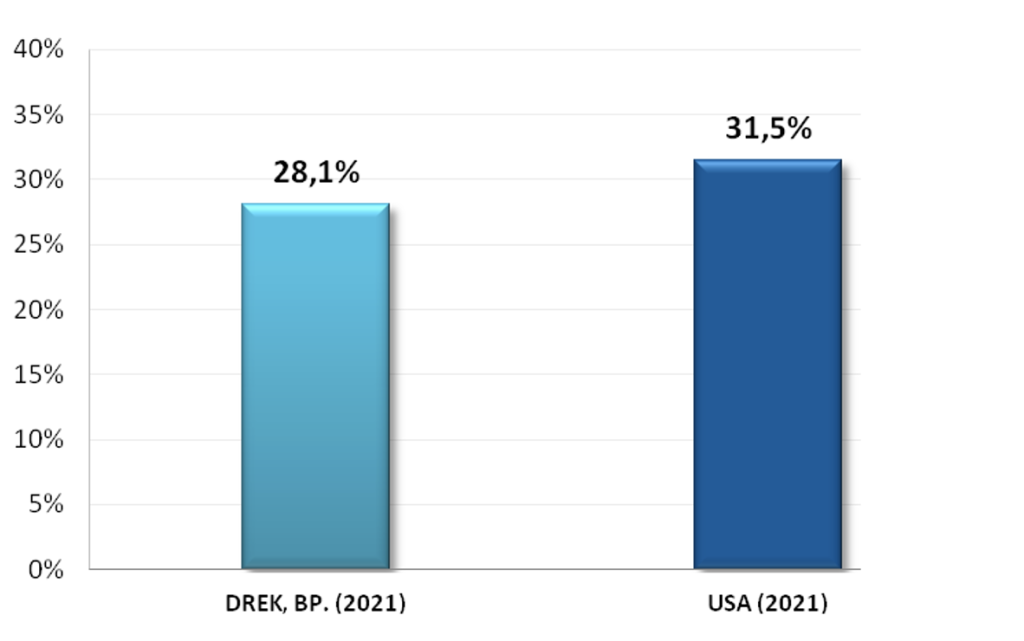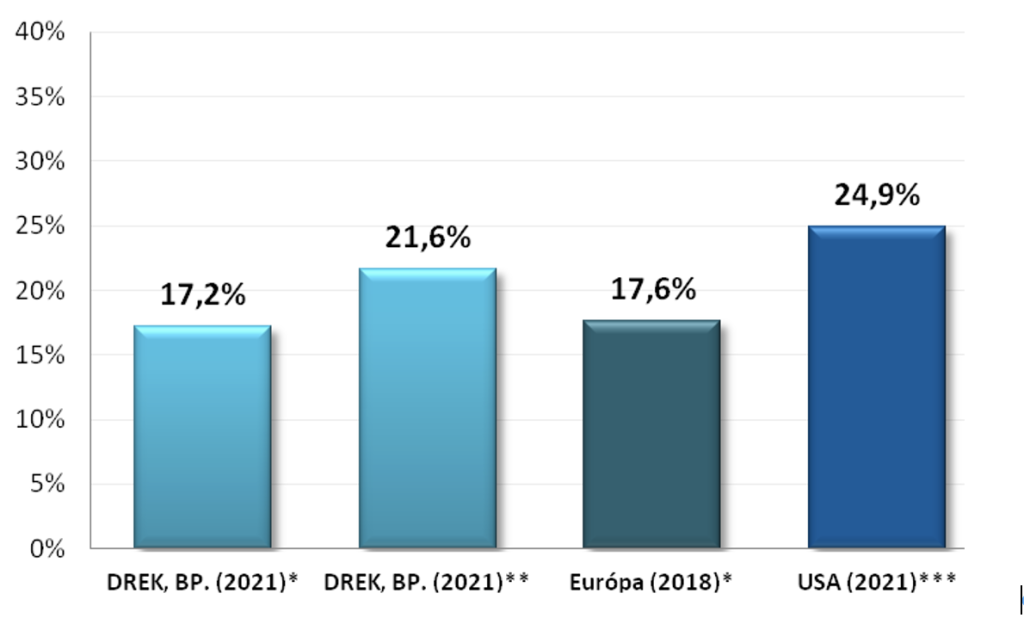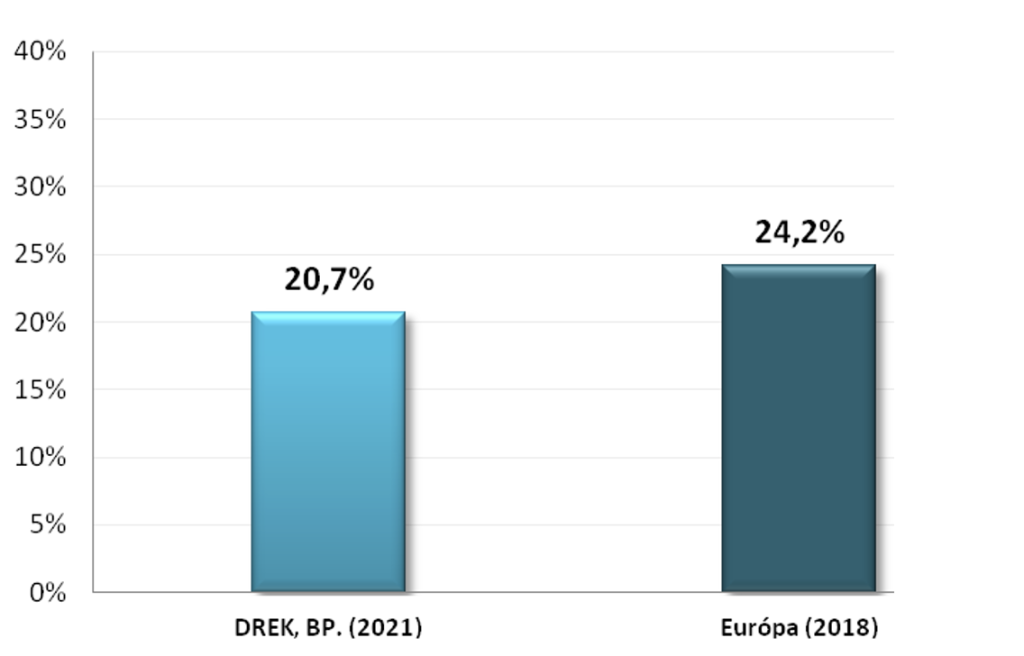Clinical outcome of in vitro fertilization, intracytoplasmic sperm injection and frozen embryo transfer cycles

Figure 1. Cumulative live-birth rate / oocyte aspiration: the graph shows the live-birth rate after the embryo transfer in the fresh cycle or if available/ needed after the subsequent frozen embryo transfer(s) following the same oocyte collection. The cycle is considered to be completed if delivery occurs after any of the transfer(s) or if all available embryos have been transferred. US and Dunamenti REK IVF Center results are from year 2021.

Figure 2. Live-birth rate/ oocyte aspiration
*The EU and Dunamenti REK results show the live birth rate after the fresh cycle embryo transfers (transfer that follows the retrieval), so the result is considered to be negative if no oocyte was collected, if the treatment has not resulted in an embryo, or if elective cryopreservation was planned.
**In the case of Dunamenti REK the right column shows the live birth rate in those cycles when the retrieval was followed by a fresh embryo transfer.
***In the US an increasing proportion of cycles involve elective cryopreservation, primarily for genetic testing of the embryos and the transfer is only performed based on the genetic results as a frozen embryo transfer. The live birth rate in the case of the US is calculated based on the first transfer (fresh or frozen) after the oocyte collection.

Figure 3. Live birth rate per embryo thawing in frozen embryo transfer cycle (Dunamenti REK vs EU)
Comments:
When the different results are compared the following should be taken into consideration:
- The figures show the result of all age categories combined. Female age has the greatest impact on fertility treatment success rates. In those countries where financed fertility care is available for women of advanced reproductive age, the mean age of the patient population is expected to be higher, and therefore the success rates are expected to be lower.
- In the US the proportion of cycles that involves genetic testing of the embryos has been increasing. The transfer of a genetically tested embryo that is found to be healthy is more likely to result in a pregnancy when compared to the transfer of an untested embryo.
- In those countries where multiple cycle are covered by health insurance the proportion of patient who return for multiple cycle is expected to be higher. The success rate is known to decline with the increasing number of previous failed attempts.
Sources:
- In the case of Dunamenti REK IVF Center live births are based on the reports we receive from our patients.
- C Wyns et al. ART in Europe, 2018: results generated from European Registries by ESHRE. Hum Reprod Open 2022:1-20
- https://www.sartcorsonline.com/rptCSR_PublicMultYear.aspx?reportingYear=2021

